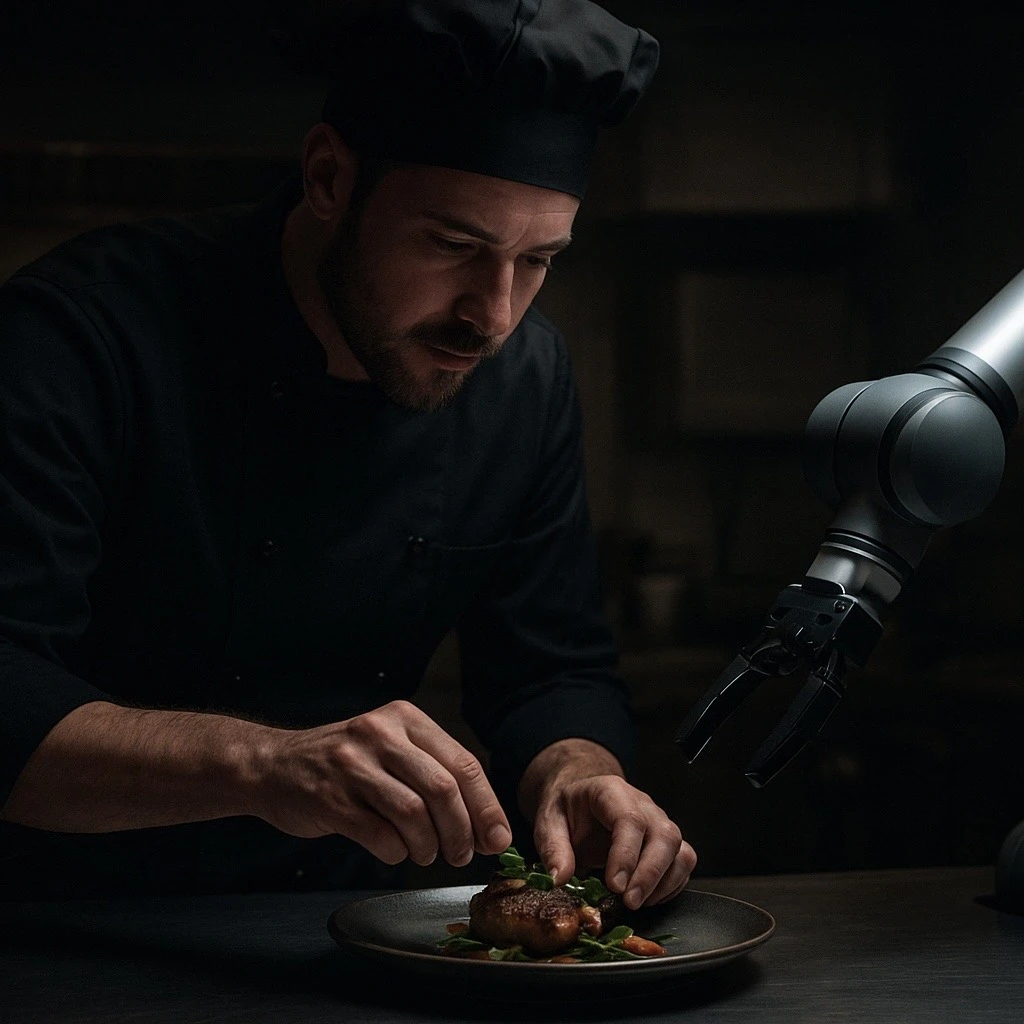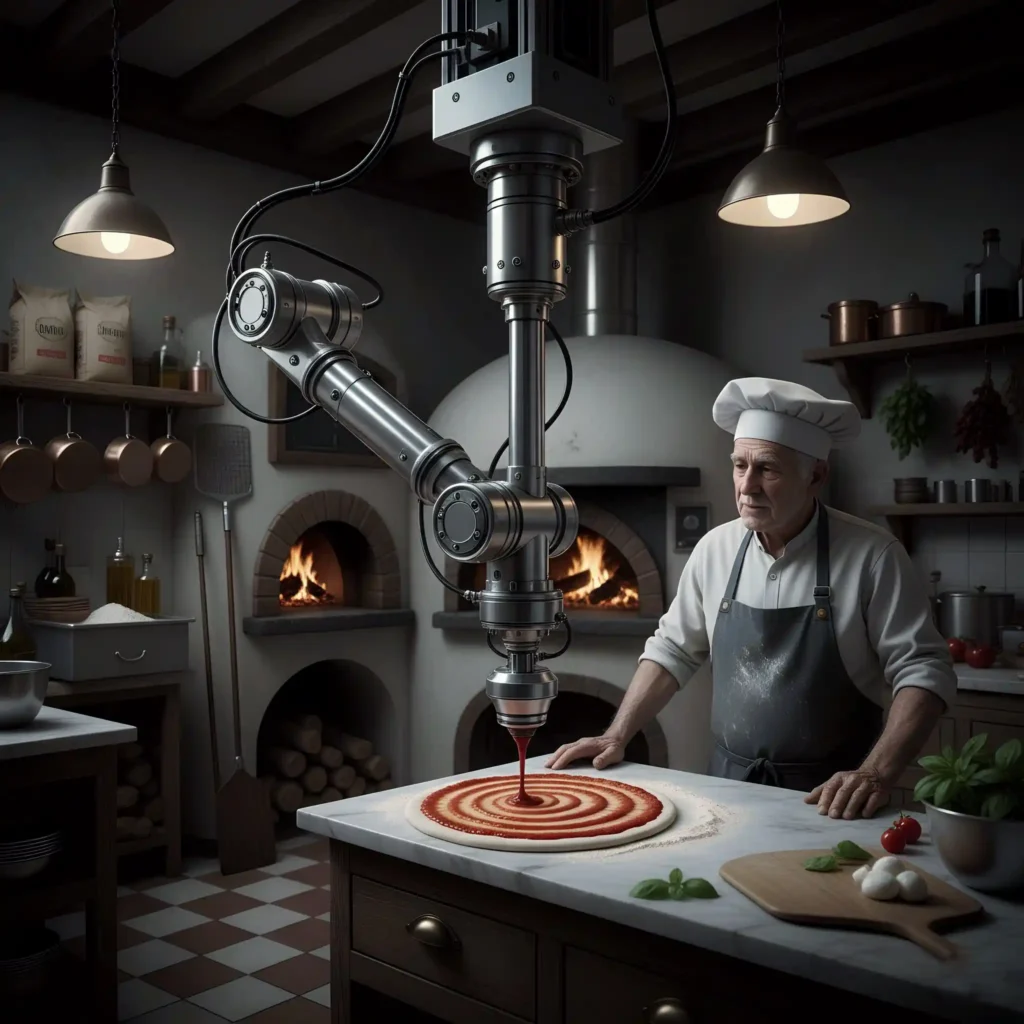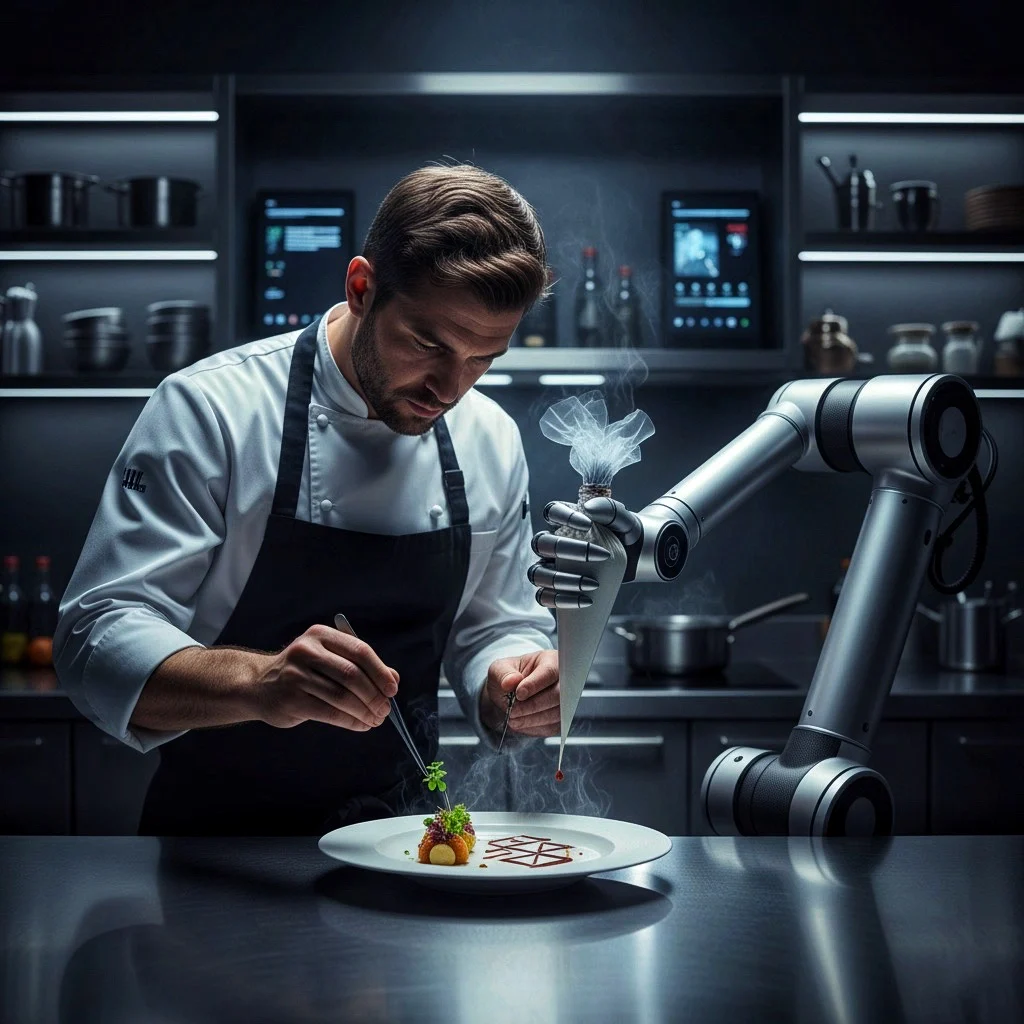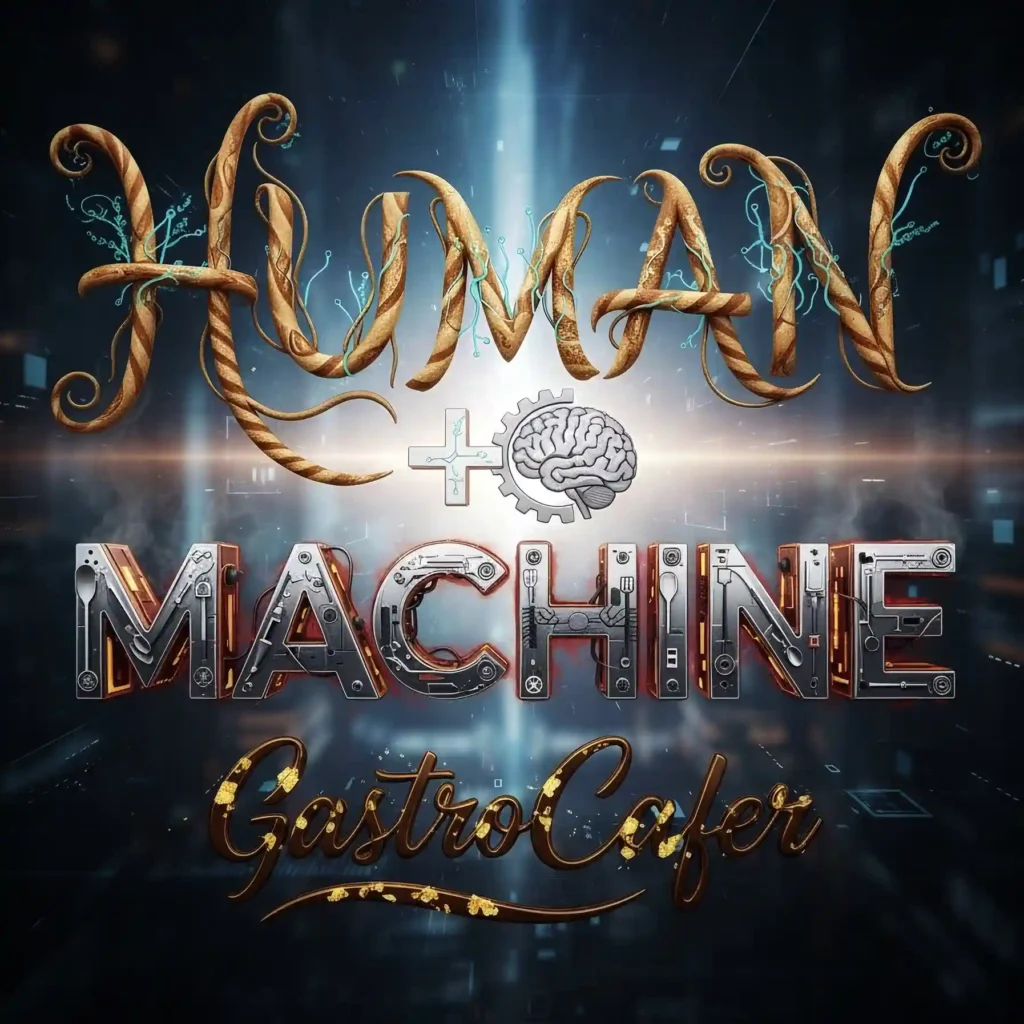
The entry of artificial intelligence into the kitchen in the 21st century is no longer science fiction, and it’s a daily reality.
From pizza-making robots to automatic sauce stations, many efficiency tools are already operating in restaurants.
These innovations promise to increase functionality and reduce costs in the food and beverage industry.
It looks like soon, not only will Amazon be replacing 30,000 of its employees; Michelin-starred restaurants will be doing the same. 🙂
Yet before sounding the alarm, we must ask a fundamental psychological question:
Can food made by a machine ever be loved as much as food made by human hands?
This deep question was explored by Ethan Pancer and colleagues in their research “Robots in the Kitchen: The Automation of Food Preparation in Restaurants and the Compounding Effects of Perceived Love and Disgust on Consumer Evaluations”
I wanted to write a summary of this article today, as AI applications like Gemini, ChatGPT, and Microsoft Copilot become increasingly popular.
In this article, GastroCafer will examine how the use of robots in restaurants is fundamentally disrupting our perception of food.
Cafer Can Yeşilyurt wishes you a pleasant read! 🙂
Quick Note: According to Oxford Languages, automation is defined as “the use or introduction of automatic equipment in a manufacturing or other process or facility.”
Consumer Psychology and Food: Is It Just About Feeding Ourselves?

As Anthony Bourdain once said: “Food is everything we are.
It’s an extension of nationalist feeling, ethnic feeling, your personal history, your province, your region, your tribe, your grandma.
It’s inseparable from those from the get-go.”
From his words, we learn that food is not merely a biological need. It is also an emotional and cultural expression.
That’s why, in most cultures, meals prepared by human hands are associated with sincerity and care.
This is exactly where “Robots in the Kitchen” draws its focus:
How does the growing presence of robots in the kitchen affect the emotional bond and perception of flavor in food?
Four Experiments, One Question: Does Food Lose Its Soul When a Machine Touches It?

Pancer and his team conducted four experiments, testing how consumers perceive foods made by humans versus robots.
Their findings can be summarized in two key points:
- Automation makes consumers perceive food as less tasty and less “made with love”.
- Participants also reported a higher feeling of disgust toward robot-prepared meals.
The Dual Contagion Effect

The key point of the research is that feelings of lack of love and disgust/revulsion operate simultaneously and in opposite directions.
The researchers call this the “dual contagion effect“.
1. Blocked Positive Contagion
The “made with love” perception is a symbolic transfer of human emotion.
A mother’s soup, a chef’s signature dish, or a friend’s homemade meal…
They all convey warmth and intimacy thanks to the “human touch”. But robots move mechanically.
They cannot transmit emotion, so the food lacks that warmth and meaning.
2. Amplified Negative Contagion (Moral Disgust)
Interestingly, the disgust felt by participants wasn’t only about hygiene, it was also moral.
For example, hearing that a restaurant has replaced all human staff with robots may trigger feelings of ethical discomfort (they took people’s jobs).
Thus, the rejection comes not only from the machine itself but also from what it represents.
3. Corrective Contagion: Explaining the Intent
“Robots in the Kitchen” also demonstrates that these two negative effects are not entirely inevitable.
In fact, the fourth experiment demonstrates that if consumers are properly informed about the purpose of automation, their perception of food can also change.
If the target restaurant explicitly states that it uses robots to improve hygiene or speed service, feelings of disgust are significantly reduced.
Conversely, when company-centric reasons such as “cutting costs and increasing stock prices” are emphasized, negative feelings are further reinforced.
As you can see, the solution lies not in the technology itself, but in the story it’s sincerely marketed.
The Kitchen of the Future: Human–Robot Collaboration

In 21st-century kitchens, excluding robots entirely is no longer realistic.
But to minimize negative impressions, restaurants should design hybrid co-bot models.
Here are three possible strategies:
1. Backstage/Frontstage Division
Robots can be used in the backstage of the kitchen, where emotional connection with humans is considered least likely.
Repetitive tasks such as chopping vegetables and stirring sauces are examples.
2. Preserve Human Involvement
Keep critical and emotional steps like tasting, seasoning, plating under human control.
3. Storytelling in Gastronomy Automation
The purpose of gastronomy automation shouldn’t be portrayed as simply reducing costs.
It should be portrayed as enabling chefs to direct their creativity and time to more valuable tasks.
This approach positions technology not as a rival to humans, but as a tool that enhances human capabilities.
This way, consumers’ expectations for efficiency are met while also satisfying their need for emotional connection.
In short, the kitchens of the future must strike a balance between human heart and robotic precision.
In light of all these findings, it’s necessary to consider the future of flavor.
You Might Also Like: The Chef’s Bloody Humor
Final Thoughts

Automation in gastronomy is expanding rapidly, but as Ethan Pancer and his team shows that taste is never just technical.
Robots may cook perfectly, but they still cannot replicate the feeling of a meal made with love.
Perhaps the kitchens of the future will be born at the point where the rhythm of the human heart meets the precision of a robotic arm.
Robots will save time, while humans will preserve meaning.
At GastroCafer, we see this transformation not as a rivalry, but as a search for harmony between people and machines.
Whether made by human or robot hands, we’ll keep exploring new flavors and stories that shape gastronomy’s future. 😉
Continue your gastronomic journey with “Butter vs. Margarine” and “The Chef’s Bloody Humor”.
Cafer Can Yeşilyurt
Resources